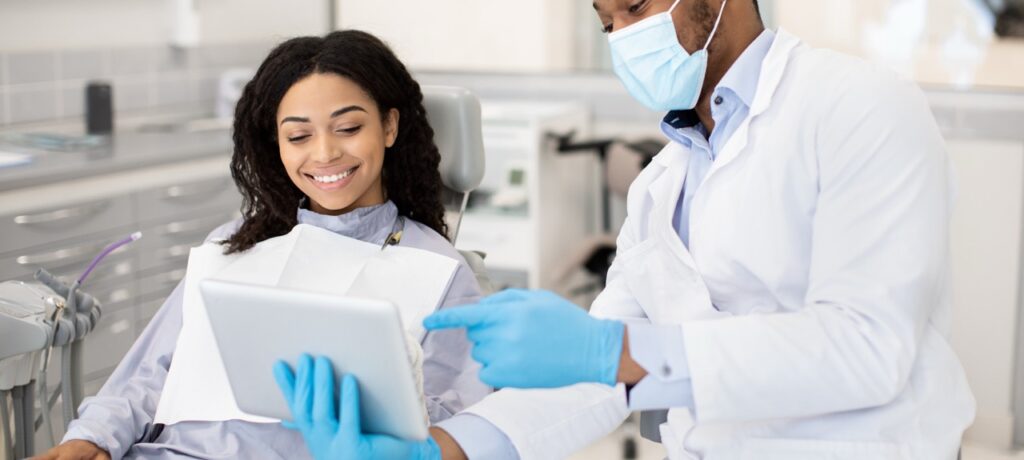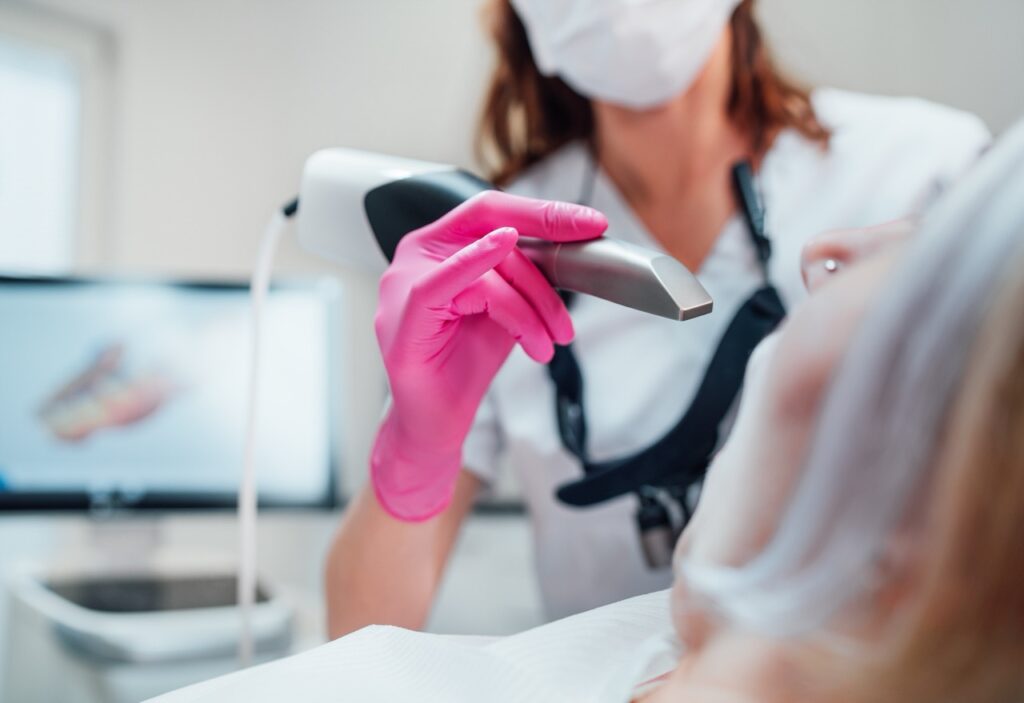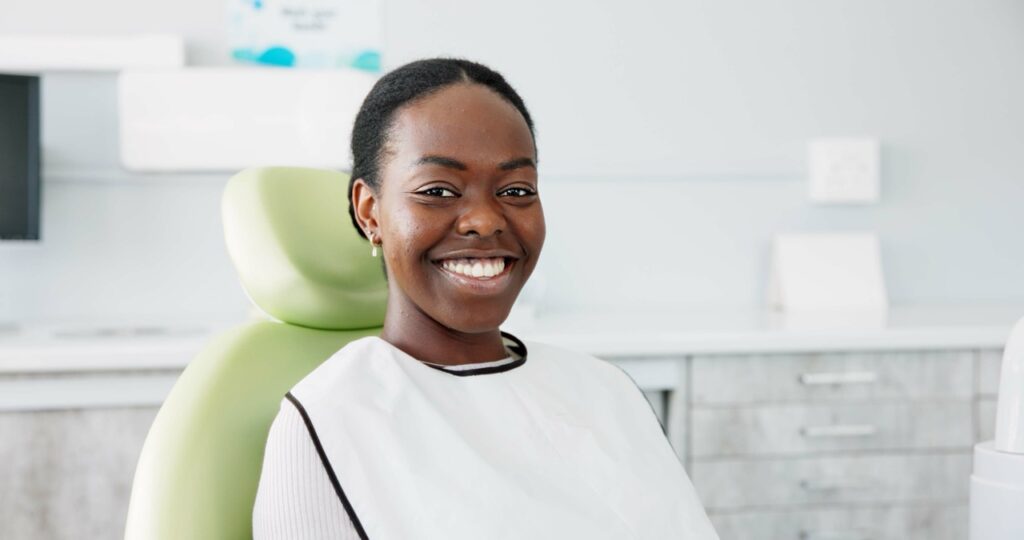Resource Library
Start Reading

In 1872, Oliver Wendell Holmes (physician and poet, not his son, the U.S. Supreme Court justice) spoke at the commencement of Harvard Dental School. He praised the advances the dental profession had made. For example, instead of “that diabolical instrument … the key,” anesthetized patients now submitted their teeth to “the embrace of the gentlemanly forceps, which lift them from their sockets … as a father lifts his first-born infant.”
What would Holmes and his late 19th-century audience have thought if they’d been able to see the state of digital dentistry in the early 21st century?
What is digital dentistry? It is the use of digital technologies and computerized and computer-aided tools in oral health care. It encompasses a wide range of applications and technologies aimed at enhancing precision, efficiency, and treatment outcomes.
Digital dentistry has thoroughly transformed patient experiences and outcomes. When you and your loved ones visit Penn Dental Family Practice (PDFP), you can see for yourself and benefit from digital dentistry equipment and techniques that Oliver Wendell Holmes and his contemporaries could probably never have dreamed about.
Read on for an overview of ways we use this advanced technology to make your mouth and your smile the healthiest and happiest they can be.
No longer do our hygienists, dentists, and other dental professionals rely only on their visual inspection of your teeth and mouth to assess your oral health and catch any problems. Digital X-rays and 3D imaging technologies like cone-beam computed tomography (CBCT) yield extremely detailed images of your teeth, bones, and the structures surrounding them.
These images help us in diagnosis, treatment planning, and monitoring changes in your mouth over time.
Digital scanning also doesn’t require the development time or materials conventional X-rays do, making them more time-efficient and better for the environment—no chemicals involved.
 To capture these images, we use handheld intraoral scanners, such as the iTero. Instead of putting a traditional metal or plastic tray full of an often distasteful impression compound in your mouth (no matter what flavor it’s supposed to be), we simply use a nonintrusive wand to create 3D digital dental impressions.
To capture these images, we use handheld intraoral scanners, such as the iTero. Instead of putting a traditional metal or plastic tray full of an often distasteful impression compound in your mouth (no matter what flavor it’s supposed to be), we simply use a nonintrusive wand to create 3D digital dental impressions.
Intraoral scanning is a quick and comfortable process, and it gives more accurate results than traditional impressions.
We use computer-aided design (CAD) and computer-aided manufacturing (CAM) systems to design and produce such dental prosthetics as crowns, bridges, and dentures. This technology streamlines the production process, not only improving accuracy but also reducing the time you have to wait for your prosthetics. Our lab technicians can also use 3D printing to produce custom dental appliances, models, and surgical guides.
Dr. Steven Wang, a PDFP oral surgeon, points to 3D printing as one of the biggest changes he’s seen in his specialty. “We now plan these surgeries on 3D models on the computer,” he says, “and can 3D print guides and splints, rather than plan and create these by hand.”
Apart from their integral role in creating digital impressions in dentistry, lasers also figure in other procedures.
Dentists can use lasers to help prepare cavities for filling by selectively removing decayed tissue while preserving healthy tooth structure.
Lasers can effectively decontaminate pockets in the gums (periodontal pockets) and promote soft tissue reattachment.
And, further illustrating precision digital dentistry, lasers can allow for the precise and bloodless removal of oral lesions, as well as the performance of biopsies with minimal tissue damage.
Laser-assisted procedures are generally less invasive, which means reduced discomfort and faster recovery times for you.
Digital dentistry gives you clearer, more interactive ways to understand your oral health. The detailed, 3D images you’ll see of your teeth and gums make it easier for our dentists to explain diagnoses and treatment plans.
Additionally, our digital tools and platforms can personalize your educational content. The information they can give you will let you make the best possible decisions about your care, and the ones most likely to lead to improved treatment outcomes.
 Speaking in 1872, Holmes declared, “the scientific basis of dental art has made these great advances in modern days,” and “the practice of the art itself has undergone the most wonderful transformation.”
Speaking in 1872, Holmes declared, “the scientific basis of dental art has made these great advances in modern days,” and “the practice of the art itself has undergone the most wonderful transformation.”
Thanks to digital dentistry, the science and practice of dentistry are advancing more rapidly than ever. And when you visit either of PDFP’s convenient Philadelphia locations, you’ll be able to experience that transformation for yourself.
You’ll appreciate how our digital workflow streamlines how we deliver care, resulting in shorter dental chair times and overall treatment times for you.
You’ll understand the state of your oral health more fully when we show you the clearer, more detailed images of your mouth that digital imaging in dentistry makes possible
You’ll like how intraoral scanners replace cumbersome traditional dental impressions, making you more comfortable and leading to better-fitting restorations.
And you’ll feel confident in the personalized treatment plans you receive.
Find out how digital dentistry technology contributes to a more relaxed, assured, and effective experience. Make your next or your first PDFP dental appointment online now or call us at 215-898-PDFP (7337).